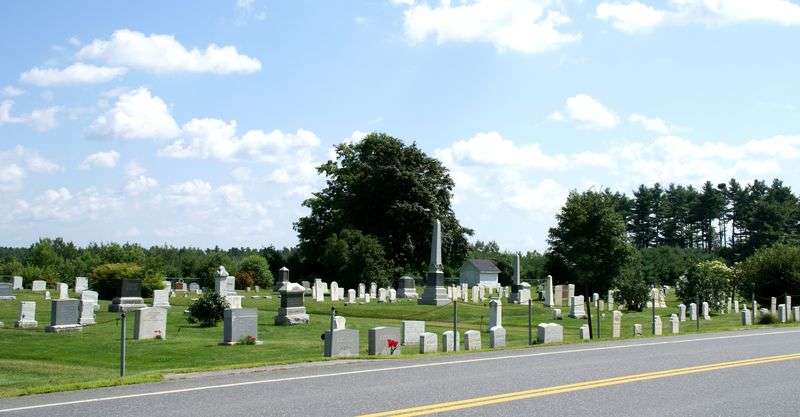
There are 20 Starretts and three women whose maiden name was Starrett buried in Chadwick Cemetery, in China.
Two weeks ago, this series featured China-born inventor Laroy Sunderland Starrett. As suggested in that story, he was a member of a large family with generations of China connections.
This article will provide information about Laroy Starrett’s family. A warning to readers: there is a fair amount of genealogy, which your writer realizes some people find uninteresting, and a fair amount of contradiction and frustration. The latter are due to lack of information, or at least available and consistent information, about long-dead people who were mostly just ordinary, though of great importance to their families and friends.
Your writer found three sources that should be accurate: a genealogy (spelling Laroy’s name Leroy) included in the China bicentennial history, an on-line transcript of information from the Starrett family Bible and copies of gravestone inscriptions. They do not always agree.
In addition to consistent records, your writer would like more personal information. What did Laroy think of his South China relatives, and vice versa? Did his Massachusetts-born children spend time with their Maine grandparents, aunts, uncles and cousins? How did so many 19th-century Starretts get from China to Illinois?
* * * * * *
According to the genealogy in the China history, Abner Starrett and his family were the first Starretts in China.
Abner was born September 28, 1776, in Francestown, New Hampshire. Kingsbury’s Kennebec County history says his father’s name was William, and his grandfather was Hugh Starrett, “who came from Scotland to Dedham.” (Your writer assumes Dedham, Massachusetts. She did not find a Dedham in New Hampshire; Dedham, Maine, was settled in 1810 and incorporated in 1837.)
On September 22, 1800, Abner Starrett married Elizabeth Dane (born in New Hampshire Jan. 23, 1779, the Starrett family Bible transcript says, or July 21, 1779, according to China cemetery records). The couple had four sons and three daughters, born between October 1801 and December 1813. They moved to China in 1814 (Kingsbury’s date).
Abner, Elizabeth and children settled in the area called Chadwick’s Corner on what is now Route 32 South (Windsor Road). Chadwick’s Corner was named for Ichabod Chadwick, who was there by 1797.
Abner Starrett died in China on Aug. 14, 1819, when he was 43 years old. His widow lived until July 21, 1865. Abner and Elizabeth are the earliest of 23 family members buried in Chadwick Hill cemetery, 20 Starretts and three women whose maiden name was Starrett.
* * * * * *
Abner and Elizabeth’s children were the second generation of Starretts in China, born in the first two decades of the 1800s. The four sons were another Abner (your writer will imitate some, but not all, sources and call him Abner, Jr.), Daniel Dane (Laroy’s father), William and David. All four sons married; at least had three large families, many of whom stayed in China.
Abner, Jr., was born Aug. 14 or Oct. 14, 1801 (the genealogy and the Bible record differ). On Sept. 4, 1823, in China, he married Mary C. Weeks (born March 24, 1802). Mary’s parents – his in-laws – were Abner and Lydia (Clark) Weeks.
Jonathan Clark, Jr., one of the brothers who first settled around China Lake in 1775, and his wife Susanna had a daughter named Lydia (Nov. 4, 1769 – April 8, 1853). An on-line genealogy says Lydia Clark married Abner Weeks (1766 -1846) and had by him two children, Mary Clark Weeks (1802-1889) and Solomon Weeks (1810-1824).
In other words, Abner, Jr., connected himself by marriage to China’s founding family.
Abner, Jr., and Mary had nine daughters and two sons, including two more Marys, Mary Emily and Mary Ann; another Elizabeth; and another Abner. These were the elders of the third generation, born between the 1820s and 1860s; they were Laroy Starrett’s first cousins.
The Bible transcription says Abner, Jr., died in June 1857.
* * * * * *
The first Abner’s second son, Laroy Starrett’s father, was Daniel Dane Starrett, born Nov. 25, 1802 (genealogy) or Feb. 9, 1803 (China cemetery records). On Sept. 25, 1825, he married Anna Crummett or Crummet, born to Joshua and Sarah Crummet(t) of China on Jan. 27 (genealogy) or March 3 (China cemetery records), 1803.
The Starrett genealogy says Daniel and Anna had five sons and seven daughters between Dec. 17, 1826, and Dec. 27, 1848. The Find a Grave website lists only six children, three sons and three daughters. Both include Laroy, born in 1836.
The genealogy says four daughters married men from China and two married men from neighboring Vassalboro. One died before her second birthday.
According to the genealogy and the China history, the only son who definitely remained in China was Laroy’s younger brother, Samuel C. Starrett. Born April 30, 1844, he served in the Civil War and came home to marry Charles Mosher’s daughter, Emily, on Feb. 26, 1869.
Samuel and Emily had five sons and two daughters, the genealogy says. They named their youngest son, born in 1887, Leroy S., presumably after his uncle.
Samuel served as a China selectman from March 1876 to March 1878 and again from March 1881 to March 1883. (His father, Daniel, had been a selectman in 1840.) In 1882 and 1883 he was among the founders of Erskine Academy, South China’s private high school near Chadwick’s Corner, and served as the school’s first treasurer.
Kingsbury wrote that Samuel Starrett was the second commander of South China’s James P. Jones G.A.R. (Grand Army of the Republic) Post, organized in April 1884. In the summer of 1885, he helped organize the South China lodge of the Ancient Order of United Workmen, serving as its first “master workman.”
In April 1890, Samuel and Daniel Starrett were among seven men – two others were Chadwicks –the China history lists as founders of the Chadwick Hill cemetery association, created to care for the cemetery. The only Daniel in the genealogy is Laroy and Samuel’s father, Daniel Dane; in 1890, he would have been in his late 80s.
About 1900, the China history says, Samuel Starrett and Louis Masse built “a store with an apartment above it” on the north side of South China’s Main Street (then the Augusta to Belfast highway), near the church. The first man to live in the apartment and run the store was Samuel and Emily’s son, George (Laroy’s nephew), born Jan. 7, 1882.
According to the genealogy (but not to any other source your writer could find), Laroy and Samuel’s youngest sister, Mary (born in China Dec. 27, 1848), was a doctor, who married another doctor, Dr. Horace W. Sibley, of Vassalboro, on Jan. 27, 1870. (See box.)
Laroy’s mother, Anna, died March 3, 1875, the genealogy says. Daniel died Feb. 9, 1896, aged 93 (genealogy) or February 1897, aged 94 (Bible).
By March 1875, Laroy’s meat chopper had become popular. He was either still in Newburyport, or had moved to Athol, where his wife Lydia died in February 1878, leaving him with a teen-age son and three younger daughters.
Laroy founded L. S. Starrett in 1880; various sources say the company expanded quickly. By the time his father died in the 1890s, Laroy must have been fairly well-known as a Massachusetts businessman.
The genealogy in the China history says four of Samuel’s sons (Laroy’s nephews) moved to Athol to work in the factory. Ernest (born Nov. 30, 1876) spent more than 50 years there before coming back to South China, where he and his wife Aurie (Austin) lived in “the brick house” until their deaths in the 1960s.
* * * * * *
The first Abner’s third son was named William. The printed genealogy and the China cemetery records agree on William’s dates (Sept. 28, 1804 – March 29, 1841) and his wife’s name and dates (Mary Ann Calder, March 20, 1805 – Dec. 21, 1890).
The Bible record says William died April 29, 1841. An on-line genealogy gives his wife’s name as Mary Ann Thurlow and says they married on April 21, 1827. This source says they had at least three sons and a daughter – more of Laroy’s cousins.
* * * * * *
After William, Abner and Elizabeth had three daughters, Elizabeth (June 6, 1807), Lucinda (Jan. 28, 1809) and Sarah (Aug. 28, 1810). Elizabeth married a South China Chadwick; Lucinda married Thomas Giddings, almost certainly from Weeks Mills village in China; and Sarah married Edward Emerson, whom your writer has been unable to trace.
* * * * * *
Abner and Elizabeth’s fourth son, David (born Dec. 1, 1813), married on Sept. 23, 1838, Sarah D. Chadwick (born Aug. 6, 1820). David and Sarah had seven sons, born between 1840 and 1864 – more (younger) cousins for Laroy.
According to the genealogy, the oldest boy, born July 16, 1840, was named David. The Find a Grave website calls him Pvt. David Chadwick Starrett and says in the Civil War he served as a private in the 67th Illinois Volunteer Infantry.
An on-line genealogy calls him Pvt. David Chedwick Starrett. He lived in Orono in 1850 and Alna in 1860, this source says, citing census figures; he “registered for military service in 1862.”
This genealogy does not say where he was in 1862. Its earliest mention of Chicago is his marriage there, on Oct. 24, 1895 (when he was 55); and it says he died and is buried in Chicago.
David and Sarah’s second son died when he was 14, in November 1861. The next boy, Edwin Burnham Starrett, lived to be 90, residing in Massachusetts, Missouri and Wisconsin and dying in Elgin, Illinois.
Son number four, Adrian Frank Starrett, born in 1851, married a girl from Vassalboro, and lived for a while in Alna, but he, too, went to Chicago, where he died May 29, 1931.
David and Sarah’s next two children both died before their second birthdays. Moody Thurston Starrett was born in the fall of 1856 and died in the summer of 1858 (exact dates differ). His sibling, born in April 1860 and died in June 1861, was either a son named Winfield Scott Starrett (genealogy) or a daughter named Winnie Starrett (China cemetery records).
The youngest son, Dr. Carlton Elmer Starrett, was born May 15, 1864, in Alna, and died May 1, 1908, in Chicago. His gravestone in Bluff City cemetery in Elgin, Illinois, says he was a major and a surgeon in the Illinois National Guard’s Third Infantry and was a veteran of the Spanish-American War (1898).
Back to Laroy’s uncle and aunt, David and Sarah Starrett: the China bicentennial history uses them to show how bad China roads were in the 1830s. The history cites town records reporting a July 8, 1834, meeting at which voters recommended giving the couple $125 “for damages by them sustained in consequence of a bridge being out of repair (as they say).”
The vote needed endorsement by the spring 1835 town meeting. On March 23, 1835, voters created a committee to review and settle the Starretts’ claim. The history says town records do not include the outcome.
Attentive readers will have noted that the China history dates this episode about four years before the genealogy in the same book says David and Sarah got married. Your writer can offer no explanation.
The on-line genealogy says David (and presumably Sarah) lived in Alna for about 10 years and in Chicago for about 20 years; another on-line source says Sarah was in Illinois in 1900.
Sarah Chadwick Starrett died Aug. 25, 1903, and David Starrett died either Jan. 13 or Aug. 13, 1907, both by then back in Maine, according to on-line sources. They are among the family members buried in Chadwick Hill cemetery.
The Wall Cemetery
Speaking of the frustrations of limited research:
A long Sibley genealogy found on line says Horace W. Sibley (perhaps Laroy Starrett’s brother-in-law) was born in Augusta in 1845, son of William H. Sibley (Oct. 29, 1818 – Dec. 8, 1901) and his first wife, Judith W. Lowell (Sept. 5, 1809 – Sept. 1, 1878). It says nothing about Horace’s wife.
The genealogy lists William as a farmer in Vassalboro in 1850 and an Albion resident in 1860. It says he and Judith are buried in the Wall cemetery, in Vassalboro.
The comprehensive section on cemeteries on the Vassalboro website does not list a Wall cemetery.
In the Wall cemetery on the west side of Riverside Drive, in Augusta, about three miles south of the Augusta-Vassalboro line, Find a Grave lists seven Sibleys, including William (1815 – Dec. 8, 1901) and Judith Lowell (1811 – Sept. 1, 1878), but no Horace.
Main sources
Grow, Mary M., China Maine Bicentennial History including 1984 revisions (1984).
Kingsbury, Henry D., ed., Illustrated History of Kennebec County Maine 1625-1892 (1892).
Websites, miscellaneous.
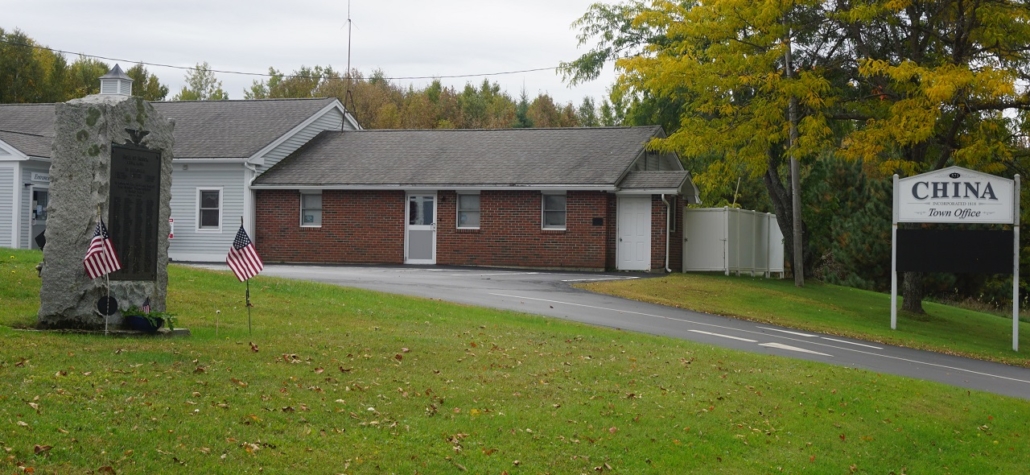 by Mary Grow
by Mary Grow

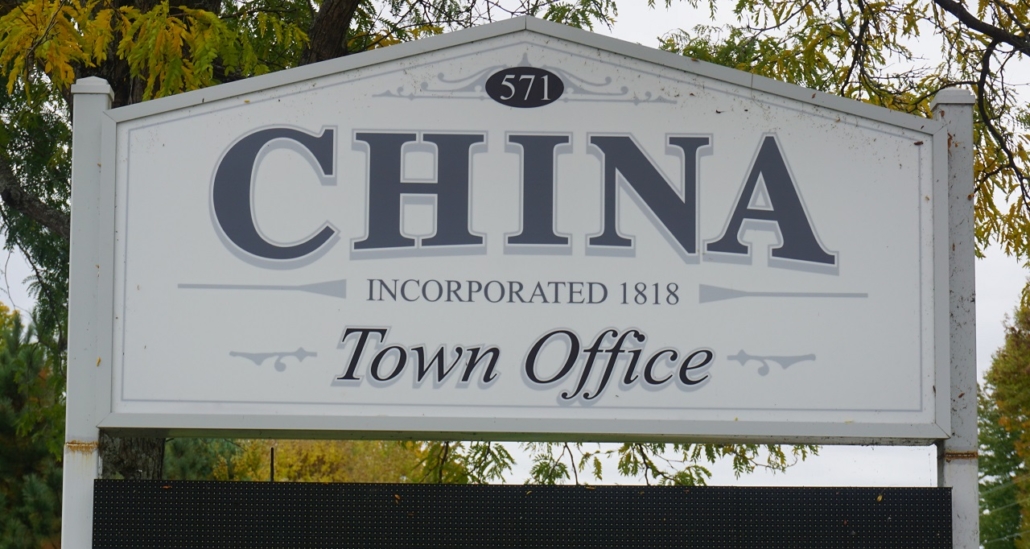


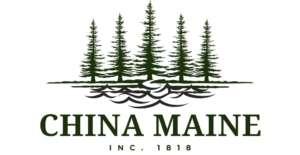
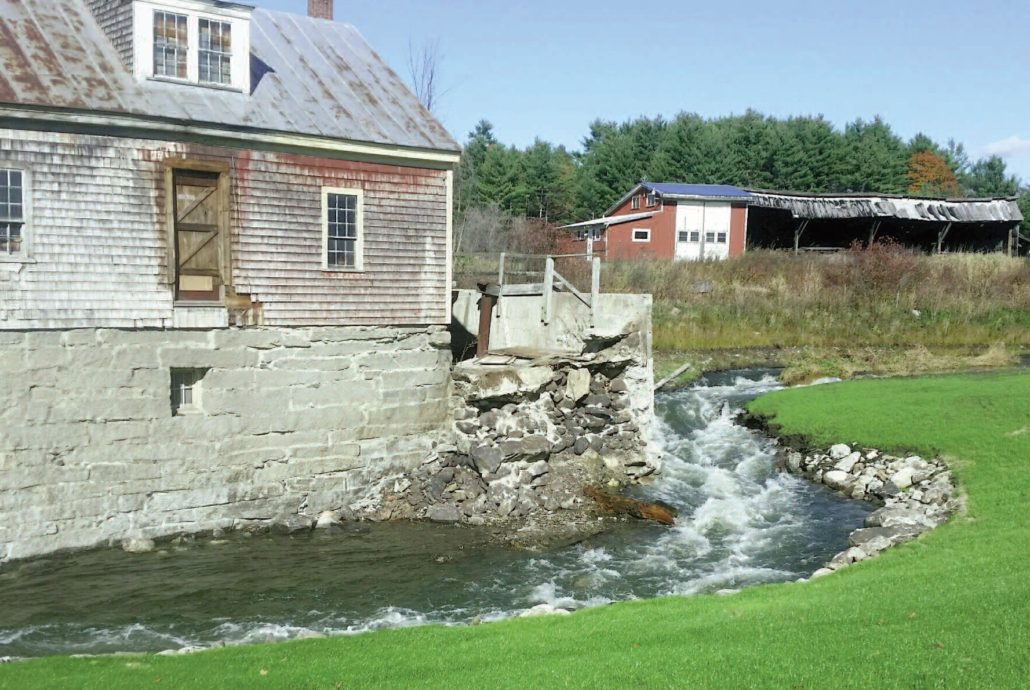
 To the editor:
To the editor:
